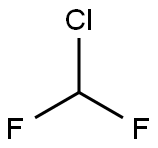4-Chloro-3-nitro-5-sulphamoylbenzoic acid
- CAS NO.:22892-96-2
- Empirical Formula: C7H5ClN2O6S
- Molecular Weight: 280.64
- MDL number: MFCD00058688
- EINECS: 245-310-9
- SAFETY DATA SHEET (SDS)
- Update Date: 2025-07-04 15:03:42

What is 4-Chloro-3-nitro-5-sulphamoylbenzoic acid?
The Uses of 4-Chloro-3-nitro-5-sulphamoylbenzoic acid
Intermediate in the production of Bumetanide
The Uses of 4-Chloro-3-nitro-5-sulphamoylbenzoic acid
4-Chloro-3-nitro-5-sulfamoylbenzoic acid has been used in preparation of 4-((2-(2-hydroxyphenyl)quinolin-3-yl)methylamino)-3-nitro-5-sulfamoylbenzoic acid.
Properties of 4-Chloro-3-nitro-5-sulphamoylbenzoic acid
| Melting point: | 227-231 °C |
| Boiling point: | 563.5±60.0 °C(Predicted) |
| Density | 1.814±0.06 g/cm3(Predicted) |
| storage temp. | -20°C Freezer |
| solubility | DMSO (Slightly), Methanol (Slightly) |
| form | Solid |
| pka | 2.82±0.10(Predicted) |
| color | Off-White to Light Beige |
| CAS DataBase Reference | 22892-96-2(CAS DataBase Reference) |
Safety information for 4-Chloro-3-nitro-5-sulphamoylbenzoic acid
| Signal word | Warning |
| Pictogram(s) |
 Exclamation Mark Irritant GHS07 |
| GHS Hazard Statements |
H315:Skin corrosion/irritation H319:Serious eye damage/eye irritation H335:Specific target organ toxicity, single exposure;Respiratory tract irritation |
| Precautionary Statement Codes |
P261:Avoid breathing dust/fume/gas/mist/vapours/spray. P305+P351+P338:IF IN EYES: Rinse cautiously with water for several minutes. Remove contact lenses, if present and easy to do. Continuerinsing. |
Computed Descriptors for 4-Chloro-3-nitro-5-sulphamoylbenzoic acid
New Products
4,4-Difluoropiperidine hydrochloride tert-butyl 9-methoxy-3-azaspiro[5.5]undecane-3-carboxylate Indole Methyl Resin N-Isopropylurea N,N-Dicyclohexylcarbodiimide(DCC) MELDRUMS ACID 5-METHYLISOXAZOLE-4-CARBOXYLIC ACID Magnessium Bis glycinate Zinc ascorbate 1-bromo-2-butyne 2-acetamidophenol 9(10H)-anthracenone Erythrosin B, 4-Piperidinopiperidine 2-((4-morpholinophenylamino) (methylthio) methylene) malononitrile 2,4-dihydroxybenzaldehyde 3-(4-morpholinophenylamino)-5-amino-1H-pyrazole-4-carbonitrile Methyl 2-methylquinoline-6-carboxylate 2,6-dichloro-4-nitropyridine 4-Bromo-2-chlorobenzonitrile 2-(benzylamino)acetic acid hydrochloride 4-(tert-Butoxycarbonylamino)but- 2-ynoic acid 3,4-dihydro-2H-benzo[b][1,4]dioxepine 1-Phenyl-1-cycloprppanecarboxylicacidRelated products of tetrahydrofuran








You may like
-
 22892-96-2 98%View Details
22892-96-2 98%View Details
22892-96-2 -
 4-chloro-3-nitro-5-sulfamoylbenzoic acid 98%View Details
4-chloro-3-nitro-5-sulfamoylbenzoic acid 98%View Details
22892-96-2 -
 22892-96-2 98%View Details
22892-96-2 98%View Details
22892-96-2 -
 4-Chloro-3-nitro-5-sulfamoylbenzoic Acid 22892-96-2 99%View Details
4-Chloro-3-nitro-5-sulfamoylbenzoic Acid 22892-96-2 99%View Details
22892-96-2 -
 22892-96-2 99%View Details
22892-96-2 99%View Details
22892-96-2 -
 22892-96-2 3-Amino admantane-1-ol 98%+View Details
22892-96-2 3-Amino admantane-1-ol 98%+View Details
22892-96-2 -
 22892-96-2 98%+View Details
22892-96-2 98%+View Details
22892-96-2 -
 Lab Grade Powder 4 Chloro 3 Nitro 5 Sulphamoylbenzoic Acid, Purity: 99%View Details
Lab Grade Powder 4 Chloro 3 Nitro 5 Sulphamoylbenzoic Acid, Purity: 99%View Details
22892-96-2
Statement: All products displayed on this website are only used for non medical purposes such as industrial applications or scientific research, and cannot be used for clinical diagnosis or treatment of humans or animals. They are not medicinal or edible.
